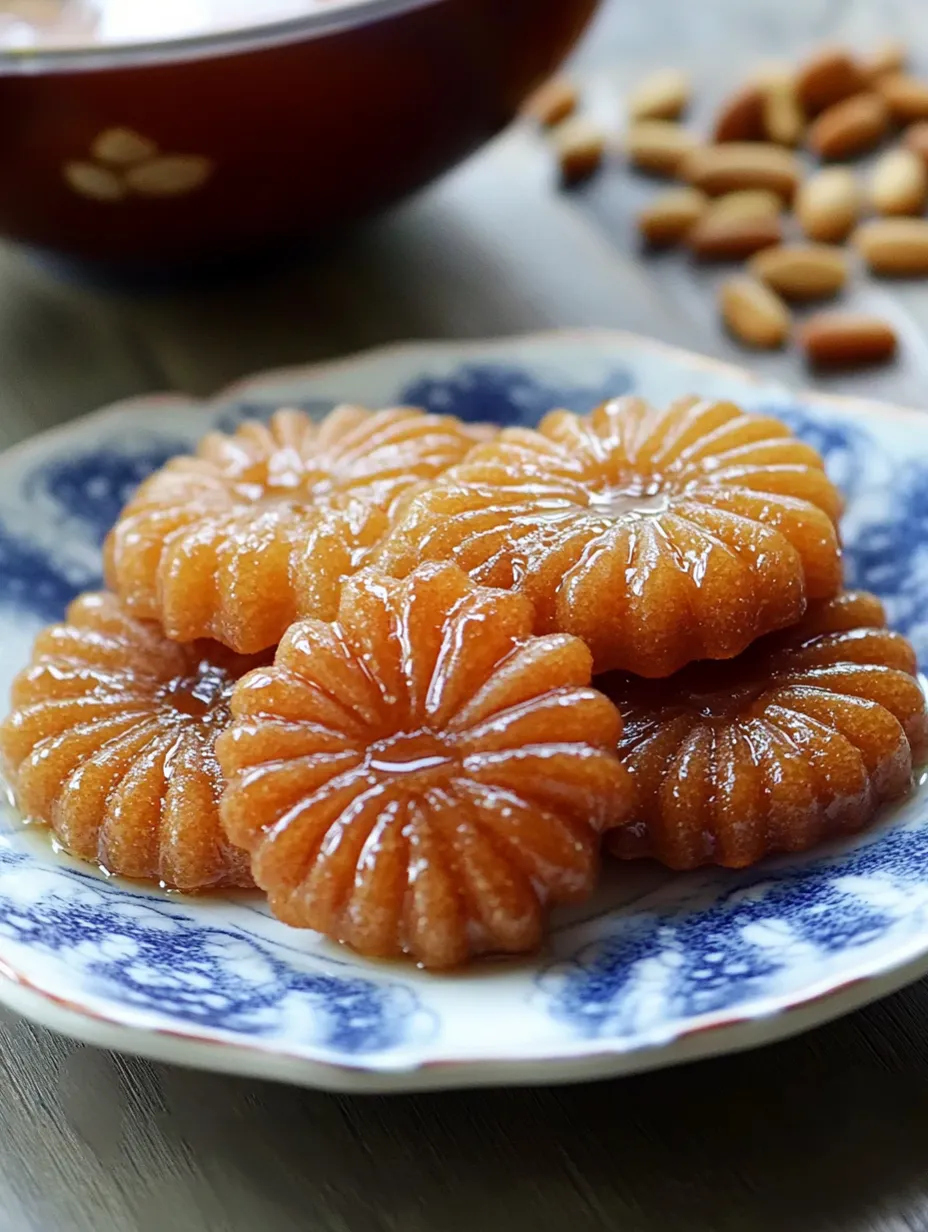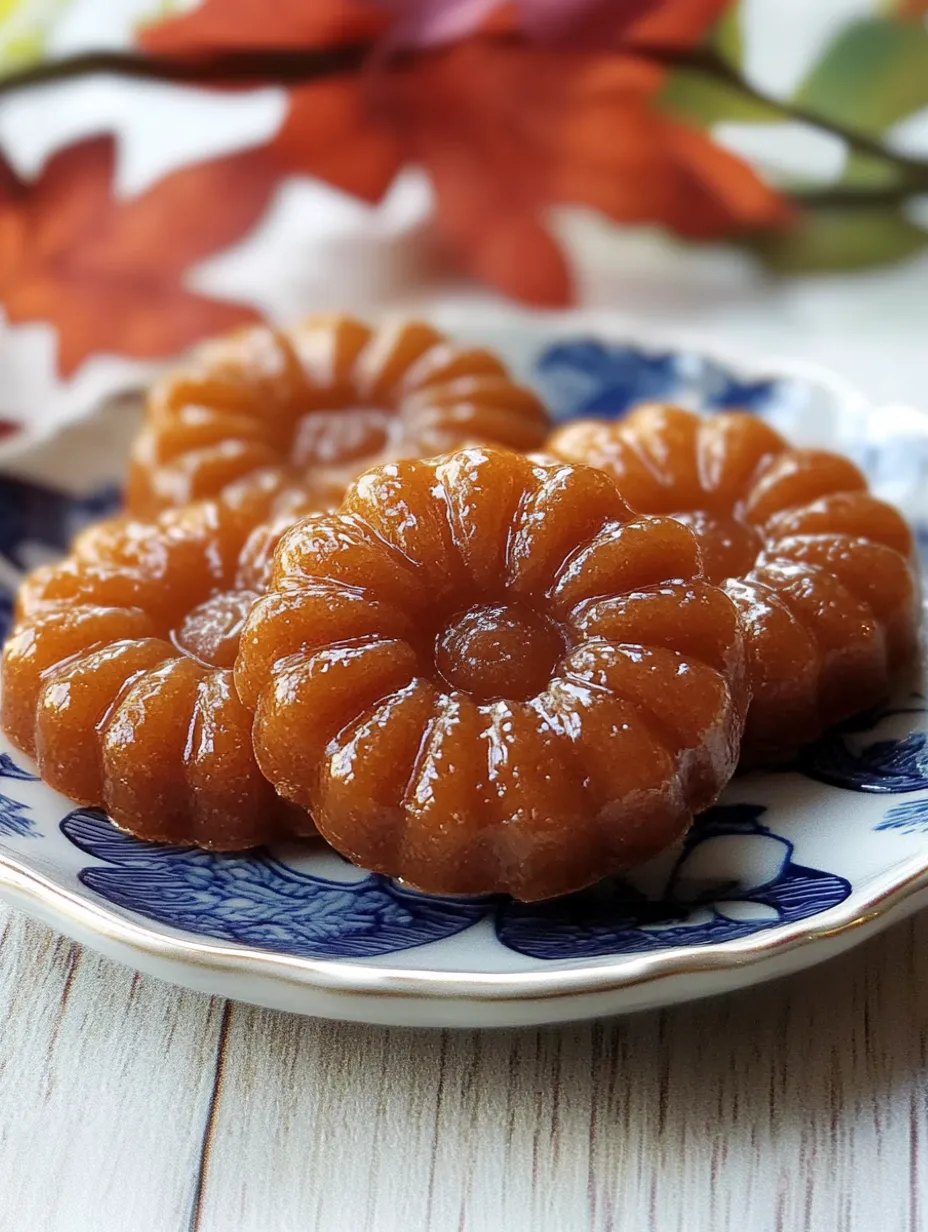 Save
Save
Korean Yakgwa cookies bring traditional sweetness right to your home. These treats have a crunchy outside and deliciously sweet inside, with unique flavors from sesame oil, honey, and sake blending perfectly. Once they turn golden from frying, they're dipped in ginger syrup that soaks in, adding warmth and depth to every bite.
The first batch of Yakgwa I ever made filled my house with the most amazing smell of honey and sesame. My next-door neighbors came knocking to find out what smelled so good! I loved how each bite starts crisp then melts into something soft and tender.
Sweet Cookie Building Blocks
- Regular flour builds the base of these cookies, giving them shape while letting the special flavors stand out—grab unbleached if you can for better results
- Toasted sesame oil gives Yakgwa its heart and soul, adding that nutty richness that makes these cookies so different—don't substitute with any other type
- Good quality honey adds natural sweetness and helps the cookies turn beautifully golden when fried—the better your honey, the tastier your cookies
- Dry sake might seem weird for cookies, but this rice wine adds hidden complexity and improves the dough texture—any dry type works fine
- A bit of water brings everything together into a dough that stays shaped during frying
 Save
Save
Enchanting Cookie Technique
Creating Your BaseGrab a big bowl and put your flour in it. Pour the sesame oil over it and use your fingers to rub it in until everything looks like damp sand. This first step coats all the flour particles with oil, which is why these cookies end up with that amazing crisp-yet-tender texture.
Adding Wet StuffMix your honey, sake, and water in another bowl until they're completely combined. The honey might be stubborn at first but keep at it. Pour this sweet liquid into your flour mix and gently work it together. Don't mix too much—just enough so it holds together. Too much mixing makes tough cookies.
Time to ChillWrap your dough tightly in plastic and let it sit for at least half an hour. This break lets the flour soak up all the moisture and helps the dough relax. Your cookies will hold their shape better because of this rest time. While waiting, you can get your syrup ready and set up for frying.
Shaping Your TreatsSprinkle some flour on your counter and roll the dough out to about half an inch thick. Getting this right matters a lot—too thin and they'll be too crunchy, too thick and the centers won't cook. Cut them into diamonds or try other shapes like flowers. Poke holes in the middle with a fork so they don't puff up when frying.
Two-Stage FryingHeat your oil to exactly 212°F and carefully drop in a few cookies at a time. You'll see them slightly puff and start floating. This slow first fry cooks them inside without browning. Next comes the magic—turn up the heat to 300°F and keep frying until they turn a beautiful golden brown all over.
Flavor SoakTake the hot cookies straight from the oil and put them in your ginger syrup. The heat helps them drink up all that sweet, spicy goodness. Flip each cookie to coat it completely, then let them soak for 2-3 hours. It's worth the wait—they'll soak up amazing flavors during this time.
The ginger in these cookies always stands out to me. My grandma told me it wasn't just for taste—it also balances out the richness from frying. I sometimes add extra ginger in winter because that warming kick feels so good when it's cold outside.
Tasty Companions
These cookies taste amazing with green tea. The slight bitterness of the tea works really well with the cookie sweetness. If you want something more filling, try them with fresh fruits like persimmons or Asian pears for different textures. They also look great on a fancy plate with other small sweets if you're having a Korean tea gathering.
Fun Twists
Try mixing in some ground black sesame seeds for a darker look and stronger nutty taste. If you like citrus, adding some yuzu or tangerine zest to your syrup brightens everything up and goes really well with the ginger. For something more modern, try a thin line of dark chocolate on top—not traditional at all, but it tastes so good nobody will complain.
Keeping Them Fresh
Store your cookies in an airtight container at room temperature and they'll stay good for about a week. If they start getting hard, just put a slice of bread in with them—the cookies will take moisture from the bread. To keep them longer, put sheets of parchment paper between layers of cookies and freeze them for up to three months. Let them come to room temperature before eating.
 Save
Save
Useful Cooking Tips
- Make the fork holes in a pretty pattern that matches your cookie shape—it looks nice and stops bubbles from forming
- Don't guess about oil temperature—buy a good thermometer for best results
- Let extra oil drip off on a rack before you put cookies in the syrup—this keeps your syrup from getting too oily
In Korean families, Yakgwa cookies show up at all kinds of celebrations, with recipes handed down for generations. I got this version from my elderly Korean neighbor who made them regularly. She taught me to check oil temperature the old-fashioned way—drop in a tiny bit of dough, and if it bubbles gently and floats without turning brown right away, you're good to go. Whenever I make these now, those memories make them taste even better.
Recipe FAQs
- → What can I use instead of sake?
- If sake’s not available, try apple or white grape juice instead. For a gentle fermented flavor without alcohol, mix 1 part rice vinegar with 3 parts water.
- → Why use two frying temperatures?
- The first gentle fry (around 212°F) cooks the dough through evenly. The second, hotter fry (300°F), adds a crisp golden outside.
- → Can these cookies be baked?
- Sure! Bake them at 350°F for 15-20 minutes until golden. They won’t be as crispy as fried ones but will be softer and work great with the honey soak.
- → How long do they stay fresh?
- Keep them in a sealed container at room temperature—they’ll last a couple of weeks. Many say they’re tastier after sitting for a few days!
- → What’s a good rice syrup alternative?
- Try corn syrup, golden syrup, or a honey-water mix (2:1 ratio). Maple syrup works too but has its own distinct taste.
